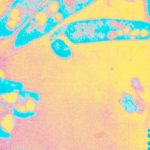Lien vers Pubmed [PMID] – 20975946
PLoS Pathog. 2010;6(10):e1001159
The species-specific phenolic glycolipid 1 (PGL-1) is suspected to play a critical role in the pathogenesis of leprosy, a chronic disease of the skin and peripheral nerves caused by Mycobacterium leprae. Based on studies using the purified compound, PGL-1 was proposed to mediate the tropism of M. leprae for the nervous system and to modulate host immune responses. However, deciphering the biological function of this glycolipid has been hampered by the inability to grow M. leprae in vitro and to genetically engineer this bacterium. Here, we identified the M. leprae genes required for the biosynthesis of the species-specific saccharidic domain of PGL-1 and reprogrammed seven enzymatic steps in M. bovis BCG to make it synthesize and display PGL-1 in the context of an M. leprae-like cell envelope. This recombinant strain provides us with a unique tool to address the key questions of the contribution of PGL-1 in the infection process and to study the underlying molecular mechanisms. We found that PGL-1 production endowed recombinant BCG with an increased capacity to exploit complement receptor 3 (CR3) for efficient invasion of human macrophages and evasion of inflammatory responses. PGL-1 production also promoted bacterial uptake by human dendritic cells and dampened their infection-induced maturation. Our results therefore suggest that M. leprae produces PGL-1 for immune-silent invasion of host phagocytic cells.

